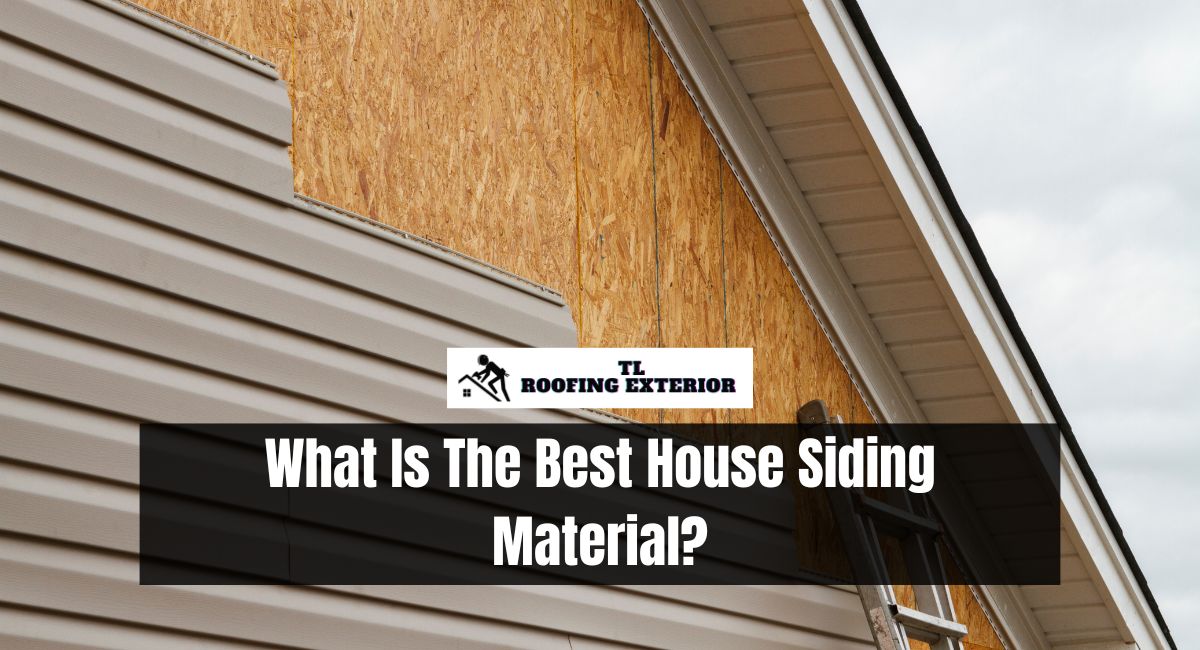Choosing the proper siding material for your home is a crucial decision that impacts not only the building’s visual appeal but also its durability and maintenance needs.
Options ranging from conventional wood and vinyl to contemporary fiber cement and metal can be overwhelming. Each material has its own advantages and disadvantages, making it essential to consider climate, budget, and intended level of maintenance.
In this article, we’ll evaluate the pros and cons of the numerous siding materials available on the market to help you choose the best one for your home.
What Is The Best House Siding Material?
The “best” house siding material can vary depending on a variety of factors, including climate, budget, maintenance preferences, and aesthetic desires. Here’s a rundown of some popular siding options, along with their pros and cons:
Vinyl Siding
Pros:
- Affordable: Generally the least expensive option.
- Low Maintenance: Requires only occasional cleaning.
- Variety: Available in a wide range of colors and styles.
Cons:
- Durability: Can crack or warp over time, especially in extreme temperatures.
- Appearance: Some people find it looks less natural than other materials.
Best For: Budget-conscious homeowners who want a low-maintenance option.
Wood Siding
Pros:
- Natural Beauty: Offers a timeless, natural look.
- Customizable: Can be painted or stained in any color.
- Biodegradable: A more eco-friendly option.
Cons:
- High Maintenance: Requires regular painting or staining.
- Cost: Generally more expensive than vinyl.
- Susceptible to Damage: Can be damaged by termites, rot, and fire.
Best For: Homeowners who appreciate natural beauty and are willing to invest in maintenance.
Fiber Cement Siding
Pros:
- Durability: Resistant to rot, fire, and insects.
- Versatility: Can be made to mimic other materials like wood or stone.
- Low Maintenance: Requires less maintenance than wood.
Cons:
- Cost: More expensive than vinyl but generally less expensive than natural wood or stone.
- Weight: Heavy material that requires professional installation.
Best For: Those looking for a durable, low-maintenance option that still offers aesthetic versatility.
Metal Siding
Pros:
- Durability: Highly durable and resistant to rot and insects.
- Low Maintenance: Requires little maintenance.
- Eco-Friendly: Often made from recycled materials and is recyclable.
Cons:
- Cost: It can be more expensive, especially for higher-quality metals like copper.
- Thermal Conductivity: Can be less energy-efficient than other materials unless well-insulated.
Best For: Modern homes and those in extreme climates; also good for those looking for a more eco-friendly option.
Stucco
Pros:
- Aesthetic Appeal: Offers a unique, textured appearance.
- Durability: This can last for many years if properly maintained.
- Energy Efficiency: Offers good insulation properties.
Cons:
- Cost: It can be expensive to install and maintain.
- Climate Restrictions: Best suited for dry climates; may not be ideal for wet climates due to potential for moisture damage.
Best For: Homes in dry climates and those looking for a Mediterranean or Southwestern look.
Stone or Stone Veneer
Pros:
- Natural Beauty: Offers a high-end, timeless look.
- Durability: Extremely durable and long-lasting.
- Low Maintenance: Requires little to no maintenance.
Cons:
- Cost: One of the most expensive siding options.
- Weight: Heavy and requires a strong foundation and professional installation.
Best For: Those looking for a high-end, natural look and willing to invest in the cost of the material and installation.
Brick or Brick Veneer
Pros:
- Classic Look: Offers a timeless, classic appearance.
- Durability: Extremely durable and can last a lifetime.
- Low Maintenance: Requires very little maintenance.
Cons:
- Cost: Expensive both in terms of material and installation.
- Weight: Heavy and requires a strong foundation.
Best For: Traditional homes and those looking for a low-maintenance, long-lasting option.
Each siding material has its own set of advantages and disadvantages, so the “best” option will depend on your specific needs and preferences. Consider factors like durability, maintenance, cost, and appearance when making your choice.
Which Siding Is Best For Homes?
The “best” home cladding depends on a number of factors, including climate, budget, and aesthetic preferences. Cost-effective and low-maintenance, vinyl siding is a popular option. Fiber-cement siding is more expensive but offers greater durability and a sophisticated appearance.
Wood siding has a classic look but requires routine maintenance. Aluminum or steel cladding is fire-resistant and durable. Engineered wood strikes a balance between natural appearance and cost. Always consider your specific demands, the local climate, and the maintenance requirements over the long term when selecting siding.
Which Siding Lasts The Longest?
Brick and stone siding are generally regarded as the most durable and long-lasting siding materials, typically enduring the lifetime of the home or more than 100 years. These materials are highly weather-, rot-, and insect-resistant and require minimal maintenance.
Another durable option, fiber cement cladding, has a lifespan of approximately 50 years. It is resistant to common siding problems such as decay, fire, and insects. Metal cladding, particularly steel or aluminum, is also durable, often lasting around 40-50 years.
Conclusion
Selecting the best siding material for your home involves a careful consideration of various factors, including cost, durability, maintenance requirements, and aesthetic preferences.
Wood has a classic appearance but requires regular maintenance; vinyl is inexpensive but may not be as durable as other materials. In contrast, fiber cement and metal siding offer a combination of durability and minimal maintenance at a higher initial cost.
By balancing these factors and possibly consulting with professionals, you can select a siding material that not only improves the curb appeal of your home but also serves you well over time.
Read More: How To Clean Metal Roof From The Ground?
